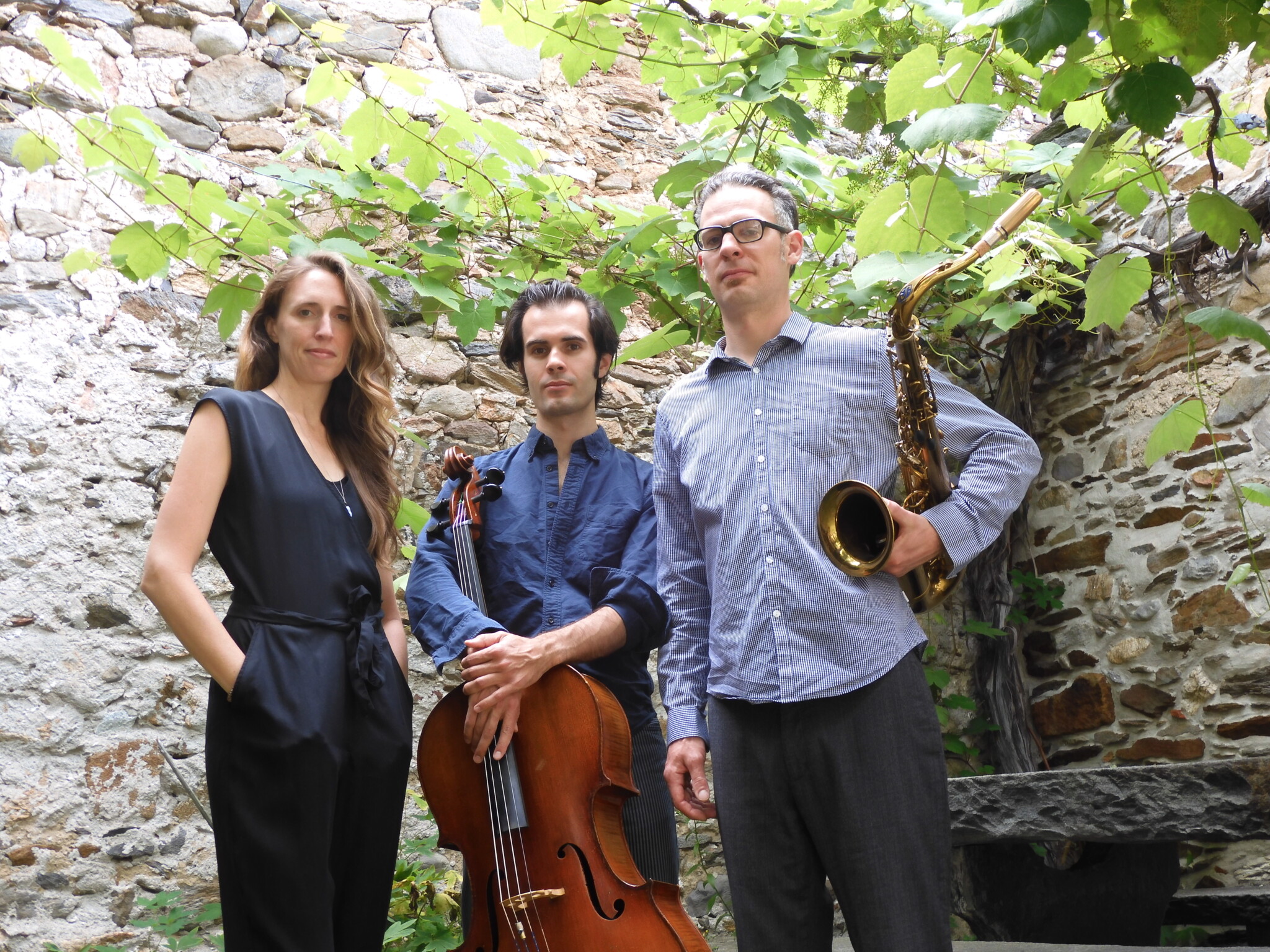Lindsay Hopkins, Keefe Jackson & Wilson Tanner Smith
Wilson Tanner Smith – Week 4 – finding what comes
Jul 7, 2023
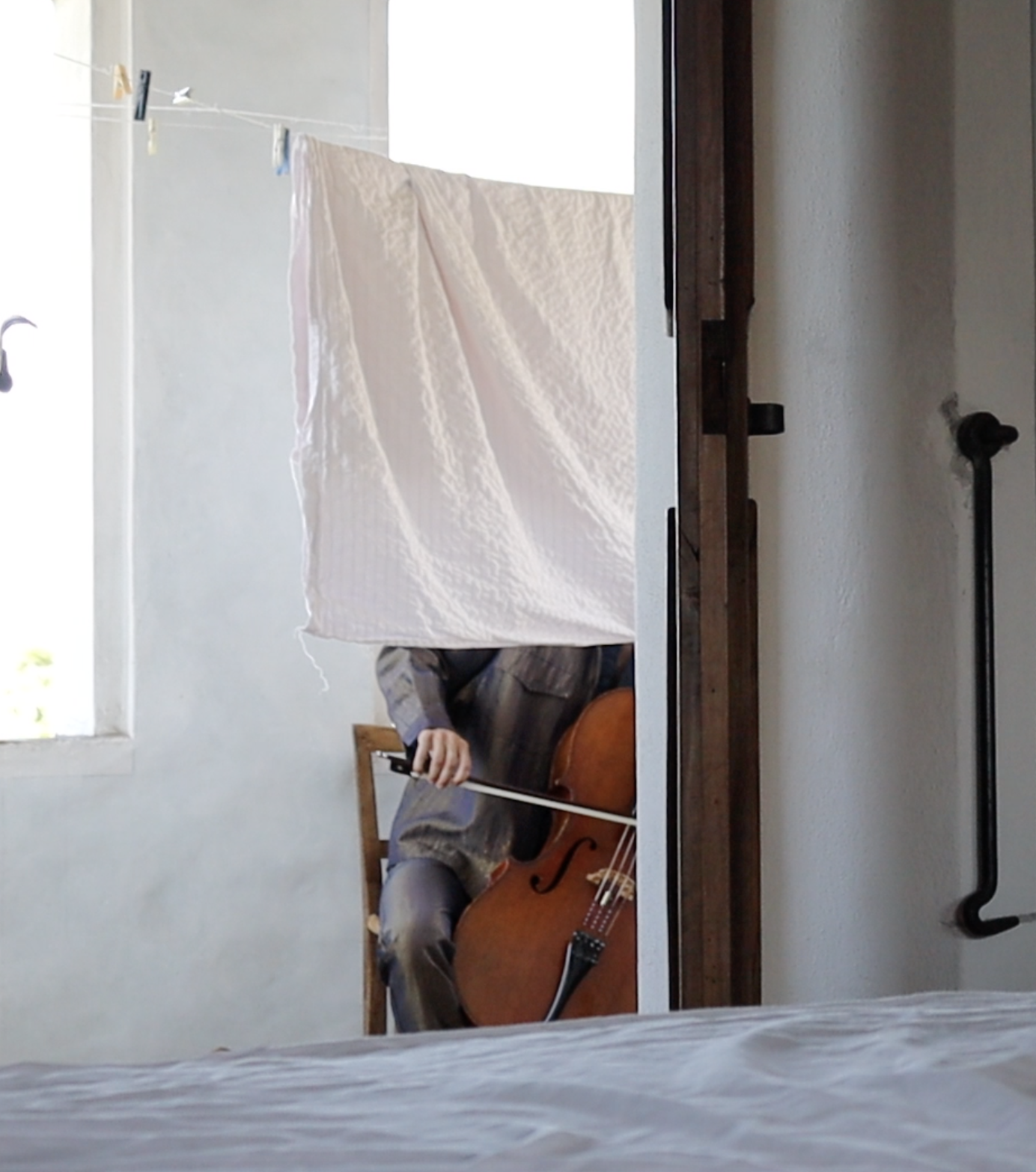
The source of myth is the same as the source of imagination. And imagination is the vehicle for any kind of creation-synthesis that beats the heart of performing arts in general, and the kind of improvisational moment-making we sought to develop in our residency at Sasso in particular.
Archetypal images, the impossible things that can arise out of any flowing-together of individuals, individual-experiences, histories of a place, living rooms, tidal patterns, turns of the streams down the mountain, angry neighbors (oops), geologic time/layers, humidity, shadows cast by old grapes in the courtyard, neighborhood cats, how mountains are created. The things we got to experience over the course of one busy but pleasantly slow and focused month at Casa Sasso.

Improvisation, intuition, at its best and most vital, is action emerging out of some subconscious wellsprings, an attunement to the needs/demands of a moment, informed by past experience (training, cultural conditioning, etc.), but synthesized anew — these same wellsprings that myth and archetype speak to/from. And as stories (“”) are woven between performers-practitioners, the spontaneous connection points (whether actively embodied or found in the attention of the viewer — who is also a practitioner) mirror the foundations and practices of myth. Objects, spaces, turns of the head or hand, are given meaning promiscuously or with solemnity. It’s ritual, and also it’s a potential we each all carry within us. This imaginative, noticing, playful, mindful capacity for Presence: directed attention and imagination. Those [all things] flowing through [this thing] (place, moment, people, performance, glance…).
Bringing this practice to Sasso, in our final week here we shifted our focus more directly to the House, the home. In a few spaces (courtyard, basement, balcony), we filmed a series of short pieces born out of a play/attuning with each other and with the flows of the house, something that we got familiar with over the course of the month living here. Finally, also, we invited an audience to our practice at Casa Sasso in the form of the camera (and Yara and Elia, two new artist friends from Locarno who filmed the works): a perspective and a sense of [start and end].

After weeks in rehearsal & exploration & research modes, it was gratifying to mark and end to our work here and to more directly play with/in the myths(…) that make this time/place at Casa Sasso just as it is.
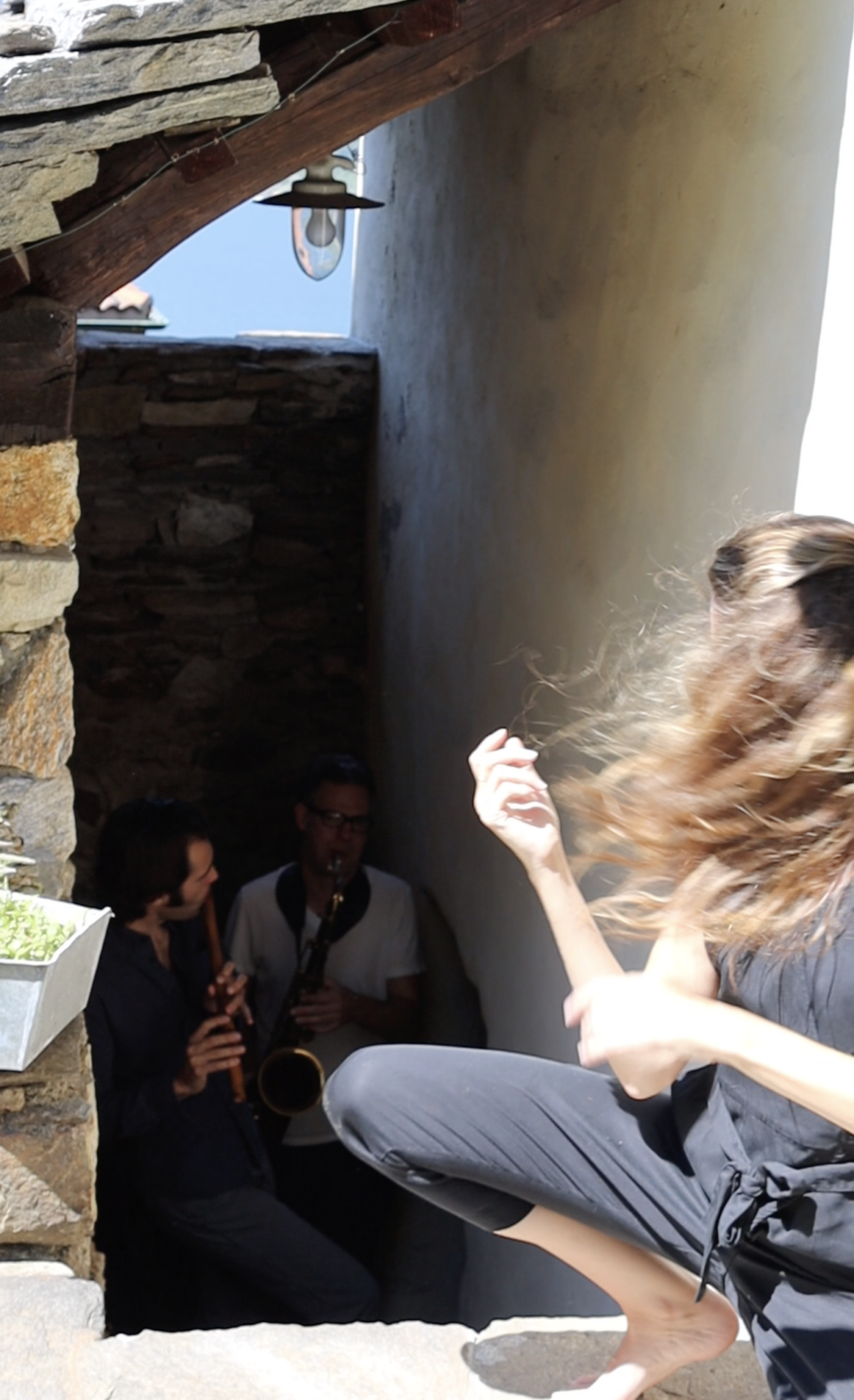
Lindsay Hopkins – Week 3 – born from the now
Jun 26, 2023
We began this past week by inviting Zurich-based dancer Angela Stöcklin into our work for two days with scores and prompts for movement and music making. We had our 3rd and final performance for the month on Thursday night, 22 June. The evening ended with a walk up the mountain towards the end of a thunderstorm because we didn’t make it back in time for the last bus back up to Sasso. We reflected on the many things artists are willing to do in order to make work, which for us includes a 25 minute hike uphill in the rain, carrying and caring for instruments and equipment. Thankfully Mother Nature was with us and the rain subsided as we hiked. On Sunday we filmed a handful of pieces around Casa Sasso, which we’re excited to turn into a series of short movement and sound films (images of this scattered around this blog post).
Why improv?
To orient towards these blog posts alongside our work, we’ve been asking: Why Improvisation? Why create art with (essentially / or seemingly) no plan? It’s risky…. and it asks a lot from the audience to trust us to create meaningful compositions.
For helpful reference here is a definition of improvisation: something that is improvised, in particular a piece of music, drama, etc. is created spontaneously or without preparation.
As Keefe wrote: “Improvisation is nothing new of course. As a method it has existed since the beginning of art, maybe even since the beginning of the universe.” At its root everything is in some way an improvisation.

Improvisation is born from the NOW. It happens only in the present and is not meant to be pre-planned OR re-created. If you’re an artist with an improvisational practice you’re always (inherently) asking: is it possible to create interesting and watchable compositions in the moment with no script or musical score?
In improvisation we go into the seemingly impossible liminal space of deep listening within each other’s energy fields and create moments by listening to our own and each other’s instincts and aesthetic interests. In the work that I do I believe that the body is the best tool to lead us to a kind of listening that happens from the energetic field—which leads us out into our awareness of space, which leads us to each other and ultimately to the power of the production of sound, gesture, voice and movement. We’re always listening to energy even if we don’t cognitively know that we are. Our energy fields reach others and the material reality around us. Creating from this field is a practice to which I apprentice, and an approach I brought into our time at Sasso.

This kind of approach is truly a practice in being present and finding trust. Alongside what Keefe mentioned in our last post, I see how our culture, our training, the instruments, held stories in the body, and habits all can apply limitations to the creative process of improvising and can make trusting the embodiment of our instincts difficult. Breaking ‘free’ of all these things requires time and exploration. It asks for slowness and subtlety and is not something learned over night.
As I also come from a healing background and work with artists (and all kinds of people!) with trauma healing I know how trapped emotion and the energy from chronic stress and held memory of overwhelming life experiences can shut us off from a deeper wisdom and presence we all hold within. In my own journey, setting free a deeper well of creativity trapped within me was my biggest motivator to heal from trauma and chronic stress.
Even with trauma symptoms I could still access parts of my creativity, but I knew there was more wanting to move through me and into my work but couldn’t. It couldn’t find a channel to move through because contracted energy held in the body kept me trapped in my tissue. I didn’t have the capacity to express all my intuitive artistic instincts. One tool that has helped me to unlock the body and find more range of motion and movement has been breathwork, which has been part of our rehearsal process here. Many creative ideas have come out of my breathwork practice, it allows one to tune in to deeper energetic currents. During one particular breathwork session while here, I began to tune into the whole house and imagine movement and sound emerging in different corners of the house. Out of this came the idea to film a series of scores as we let the space inform our creative choices by tuning in and listening to the house.
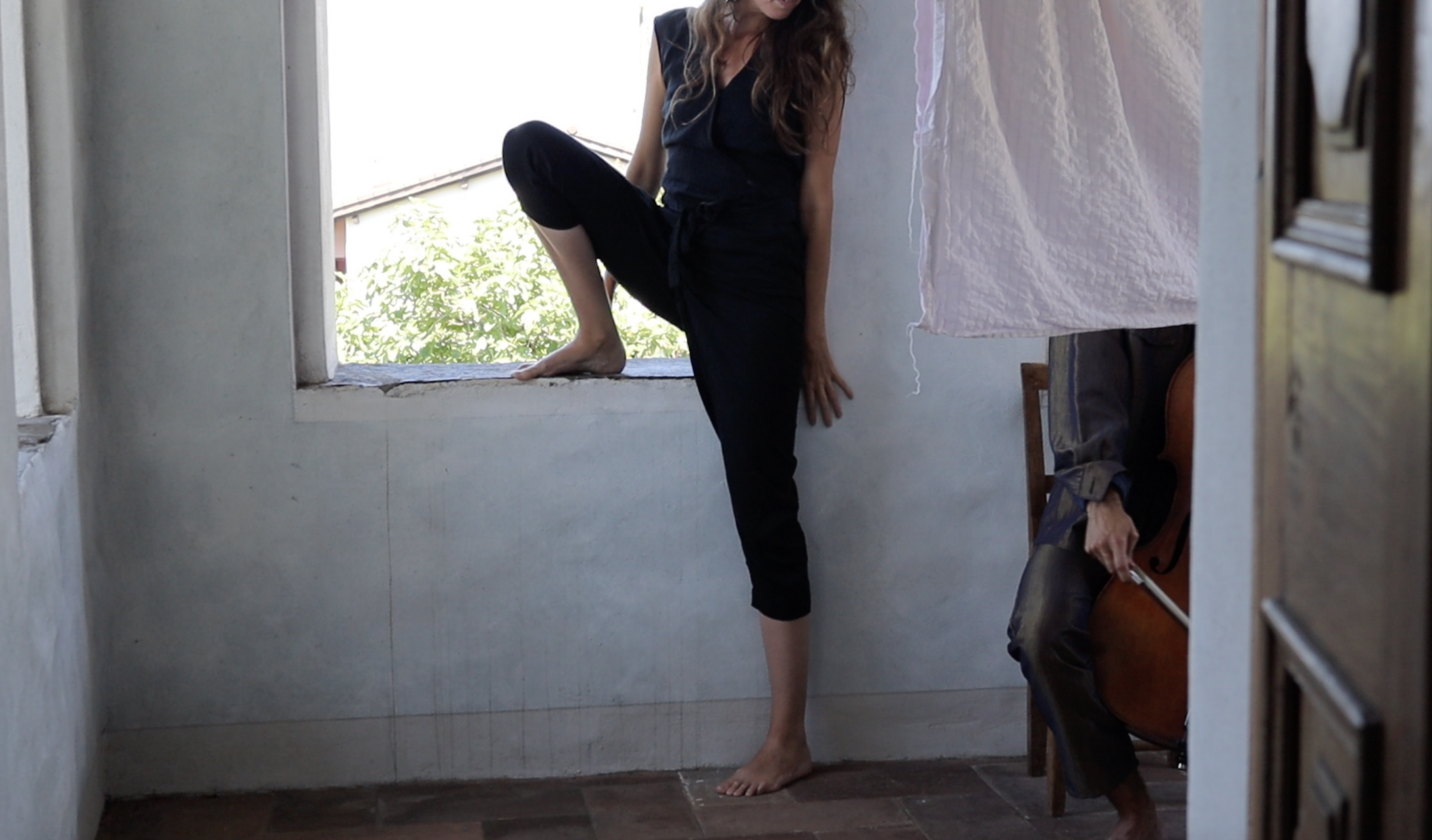
Keefe Jackson – Week 2 – Why Improvisation?
Jun 19, 2023

I’m not sure if these thoughts address the question ‘why improvisation’. As someone who has improvised music since starting to play as a child, for me improvisation is part of the ABCs of music, and by extension art and creative activity in general. In this sense my viewpoint is biased — maybe it’s not fair to ask me, or for me to answer this question. But I can share some thoughts about it.
Improvisation is nothing new of course. As a method it has existed since the beginning of art, maybe even since the beginning of the universe. It has played an important role in music since before history, so we can say that it’s an essential ingredient of music. Even when musicians are playing mostly written material, there is some element of improvisation going on, even if it’s indirect or inherited.
In the current era, when musicians say we’re improvising usually we intend to make a distinction between the written part and the improvised part. But is it really that simple? Sometimes when playing ‘improvised music’ we are recycling, repeating, regurgitating; in order to truly say we are improvising we must dig a little deeper. Others say that these three R’s are the basic building blocks of music, a kind of DNA, and that transcending them is not possible.
Another thing we are confronted with is the idea of ‘free improvisation’. I think that this is possible but it’s usually very difficult to tell if the improvising is ‘free’ or not, unless you are one of the musicians involved in the moment of doing it. Usually we are limited by our culture, training, instrument, habits, etc. Breaking ‘free’ of all these things requires another step. So free improvisation is a discipline, and there are as many pathways as there are artists who are trying to get there.
/ / / / / / / / / / / /
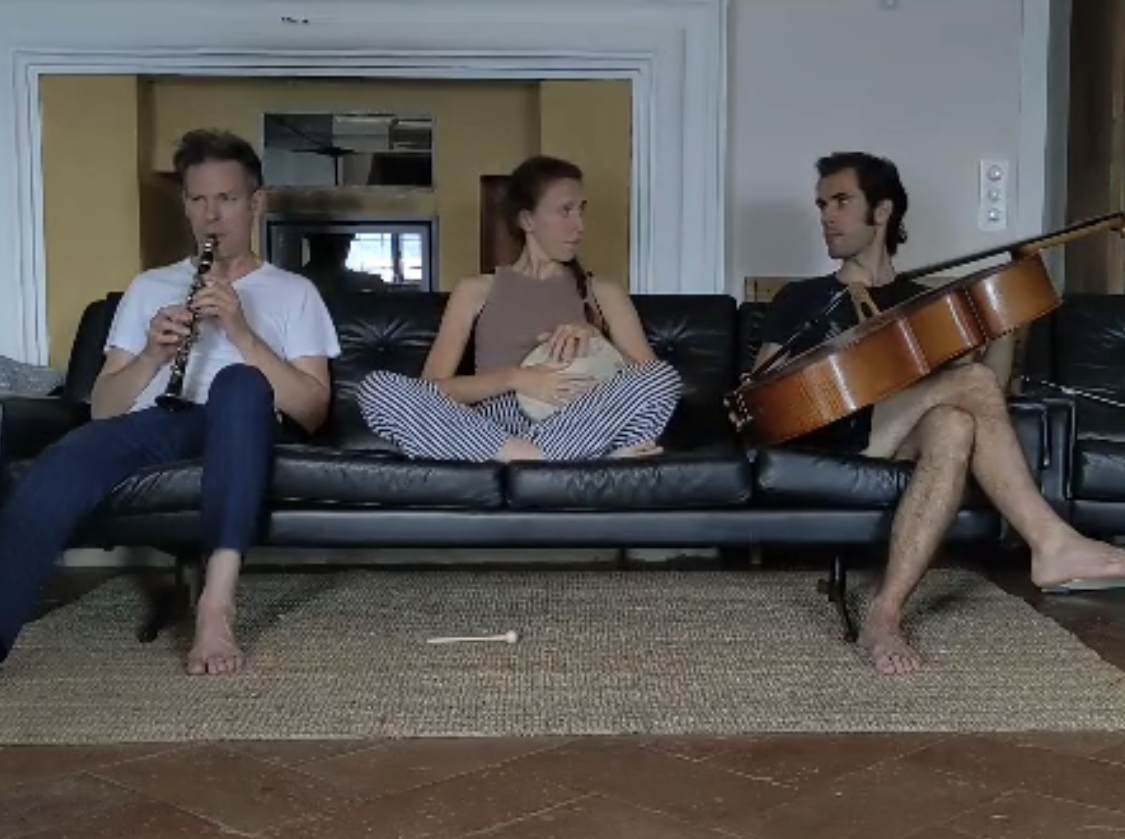

Recap:
On the 10th and 12th we travelled to Lucerne and Zurich for performances at the Mullbau (Lucerne) and WIM (Zurich). A massive learning experience to take our as-yet home-based work out into the public–we head into week three inviting Zurich-based dancer Angela Stöcklin into our work with scores and prompts for movement-music improv, and thanks to local connections in Locarno, we’ll be presenting a performance at a DIY apartment space this Thursday! See flyer below:

artefacto collective – Week 2 – Agon
Jun 18, 2023
This week, we continued experimenting with film making to translate our research on different materials, drawings, and writings. We were inspired by different mythologies and philosophical narratives, such as the Banquet by Plato and the Greek symbolism of various plants and fruits around Casa Sasso. We focused on the term ‘agon,’ which could be defined as the dramatic conflict between main characters, which is present in the Classical theater, literature, and religion.
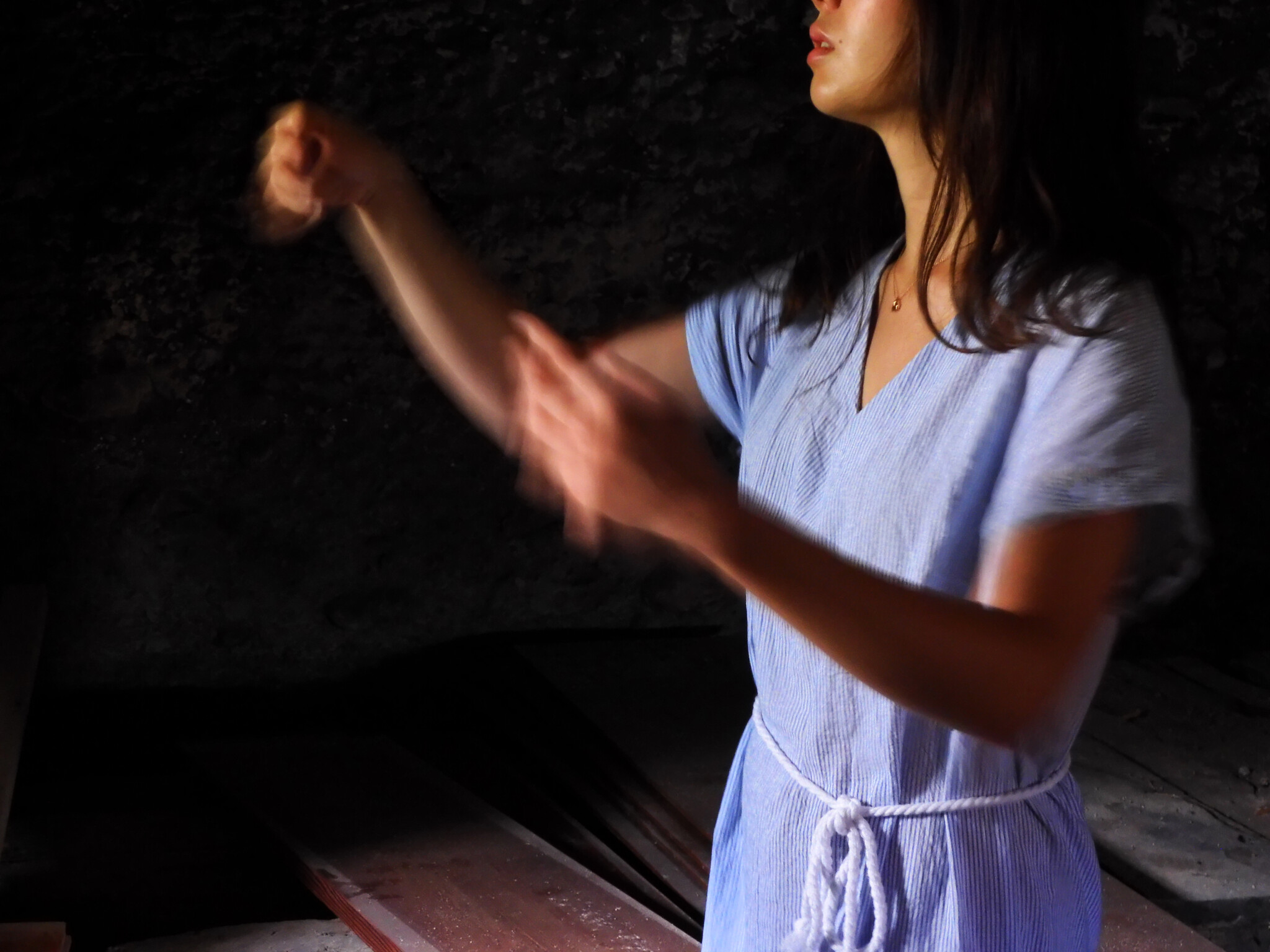
In our film, the protagonist is an architect advocating a particular cause or an idea – that is, the preservation of traditional materials and construction techniques within modern architecture. The antagonist, who is in opposition to the idea from the protagonist, becomes the constant pressure to modernize and progress to build efficient structures that tend to forget the virtues of vernacular ways of living. Through this narrative, the conflict arises from the encounter of these two opposed realities, which the architect, the protagonist, has to conceal. Light is the guiding spirit in our story, and the stone symbolizes the conflict that the protagonist has been carrying. The non-material symbol of light takes a feminine human form in the film, who continuously confronts the protagonist to face the existence of the conflict.

While developing this film, we realized the importance of new ways of approaching it by breaking the linearity of the narratives and introducing a non-logical flow. We have been playing with oneiric scenarios through different installations and myths. The purpose of this is to liberate the protagonist from his conflict by a closer contact with the guiding spirit through an unlikely encounter. This event becomes a turning-point for the protagonist by giving him the opportunity for new beginnings.
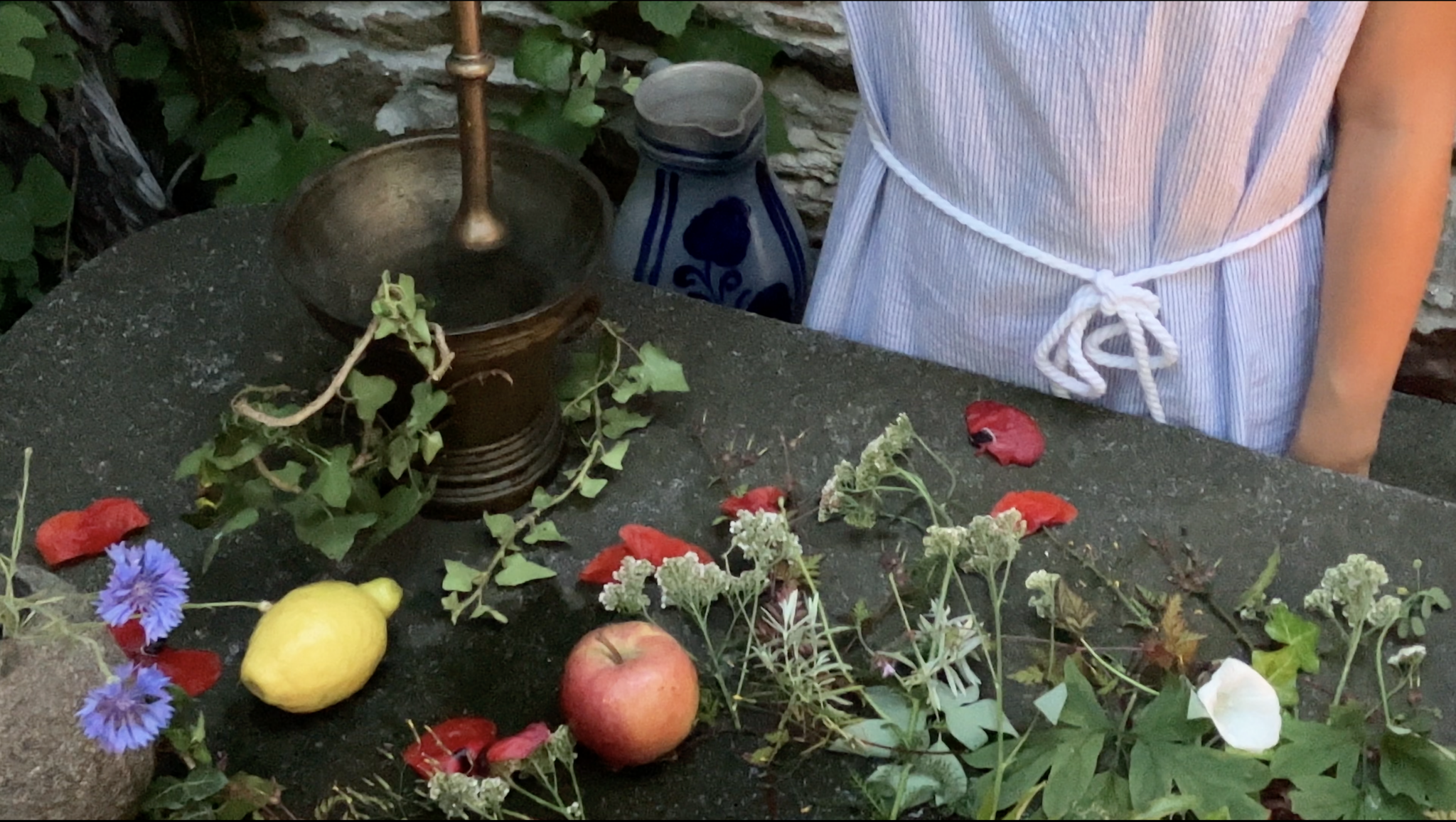
Yunni and Bernardo
The Excursionists: Keefe Jackson, Lindsay Hopkins, Wilson Tanner Smith – Week 1 – Hello
Jun 13, 2023
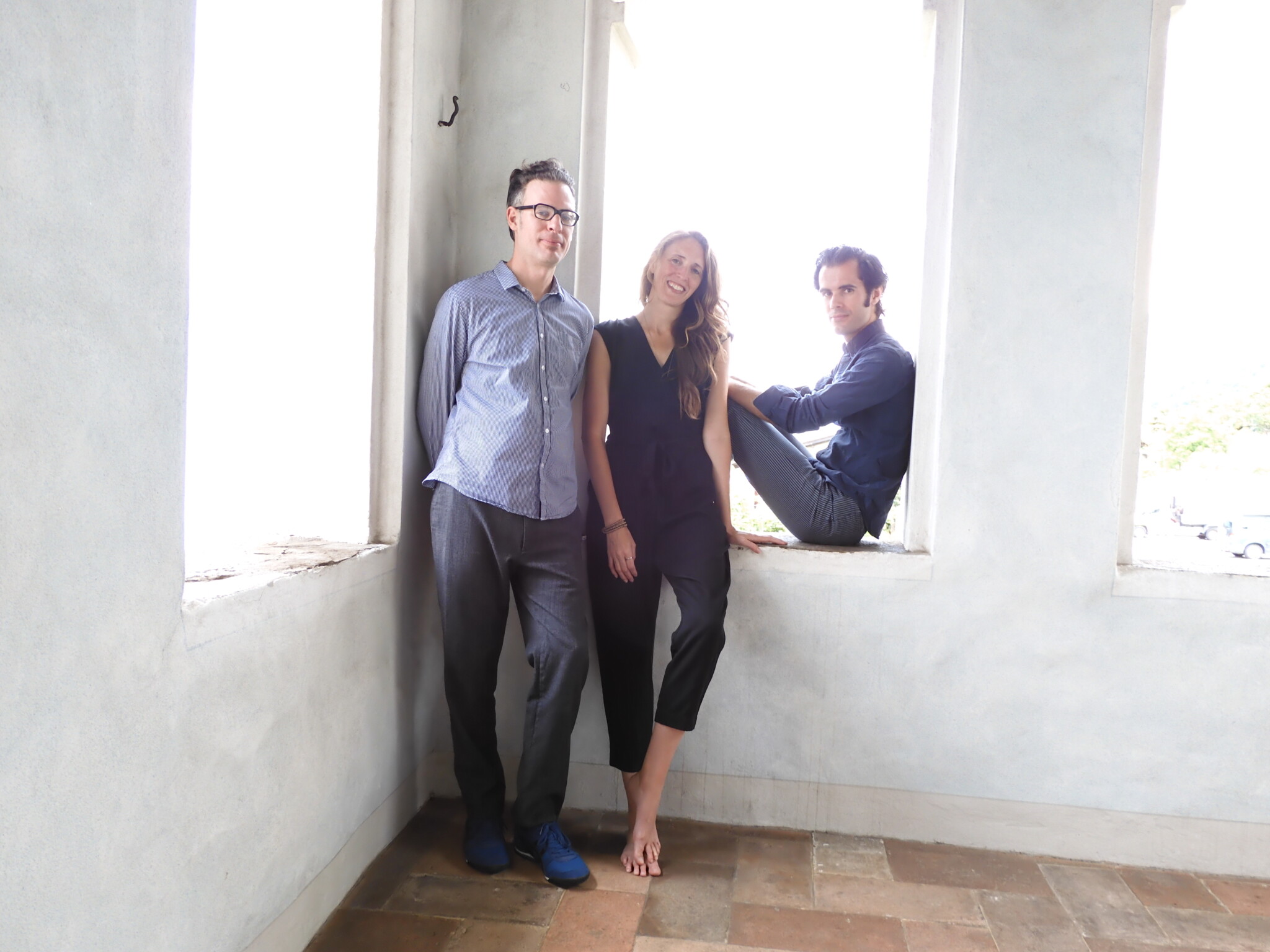
Keefe Jackson (reeds), Wilson Tanner Smith (cello, flutes, etc.) and Lindsay Hopkins (movement/theatre) are coming together this summer at SASSO to develop our approach to improvised music & movement moment-making. We have been more formally working together as a constellation since fall of 2021 with a series of exploratory rehearsals in Chicago and have a history of working together that dates back to a project “Radical Bodies” at Links Hall, Chicago, in 2017.
We create improvisational performances which allow compositions of movement and sound to evolve as we explore the energetic connections and pathways between body and instrument. Our rehearsal process is supported by somatic meditation and embodiment practices and games in order to wake up our creative instincts with an acknowledgement of our subtle energies. We’re interested in creating tangible atmospheres within which our movement and sound compositions live, allowing sound to shape the body and the body to shape sound.
Our time at SASSO is giving us the opportunity to explore and develop movement-and-sound structures for performance. Our goal is to share our research from this residency with additional collaborators for future performances, and within workshops for educational purposes to support other artists in the development of holistic rehearsal processes.
////
In our first week we acquainted ourselves with the place SASSO, and with each other, who haven’t worked together for over a year, or lived together ever.
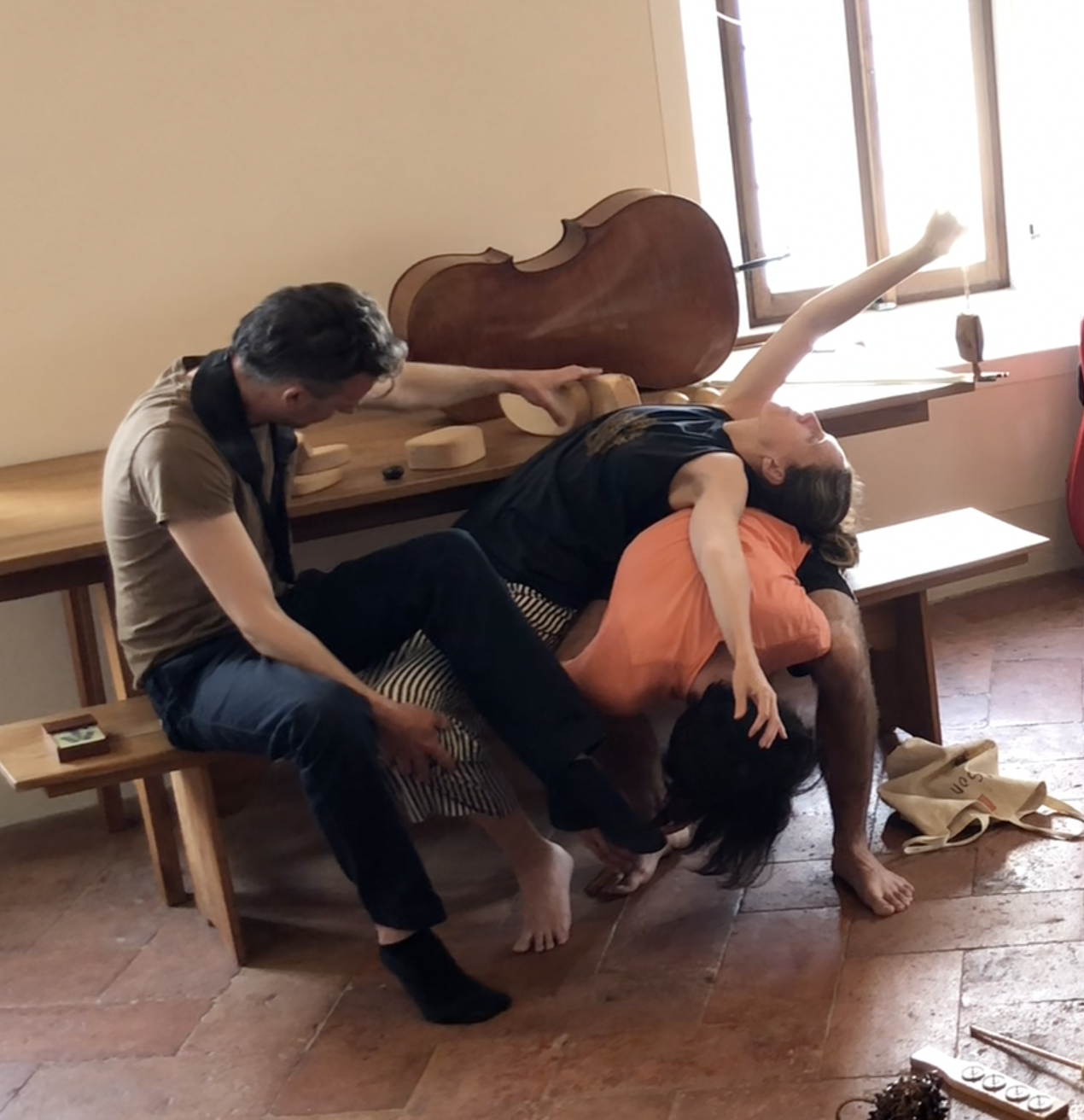
Learning about the place through our feet and legs: walking uphill and downhill, side to side.
And about each other through practice(s) and being informed by different spaces at Casa Sasso.
Through meals, trust, communal living, planning ahead…being city folks in more rural places: when is the store open, how do we get there, how much can we carry back with us?
Through cheese…and a swim.
We asked, who are you/me/we in this house?
Colliding our US contexts, European contexts; adjusting from our places to this place and to the voices we use: not overly analyzing these things but trying to be aware.
Finding our way in: through the body, meditation, group juggling.
Week 1 ended with performances at Mullbau (Lucerne) and WIM (Zürich)… reflections on these shows and returning to Sasso coming in blog post #2!
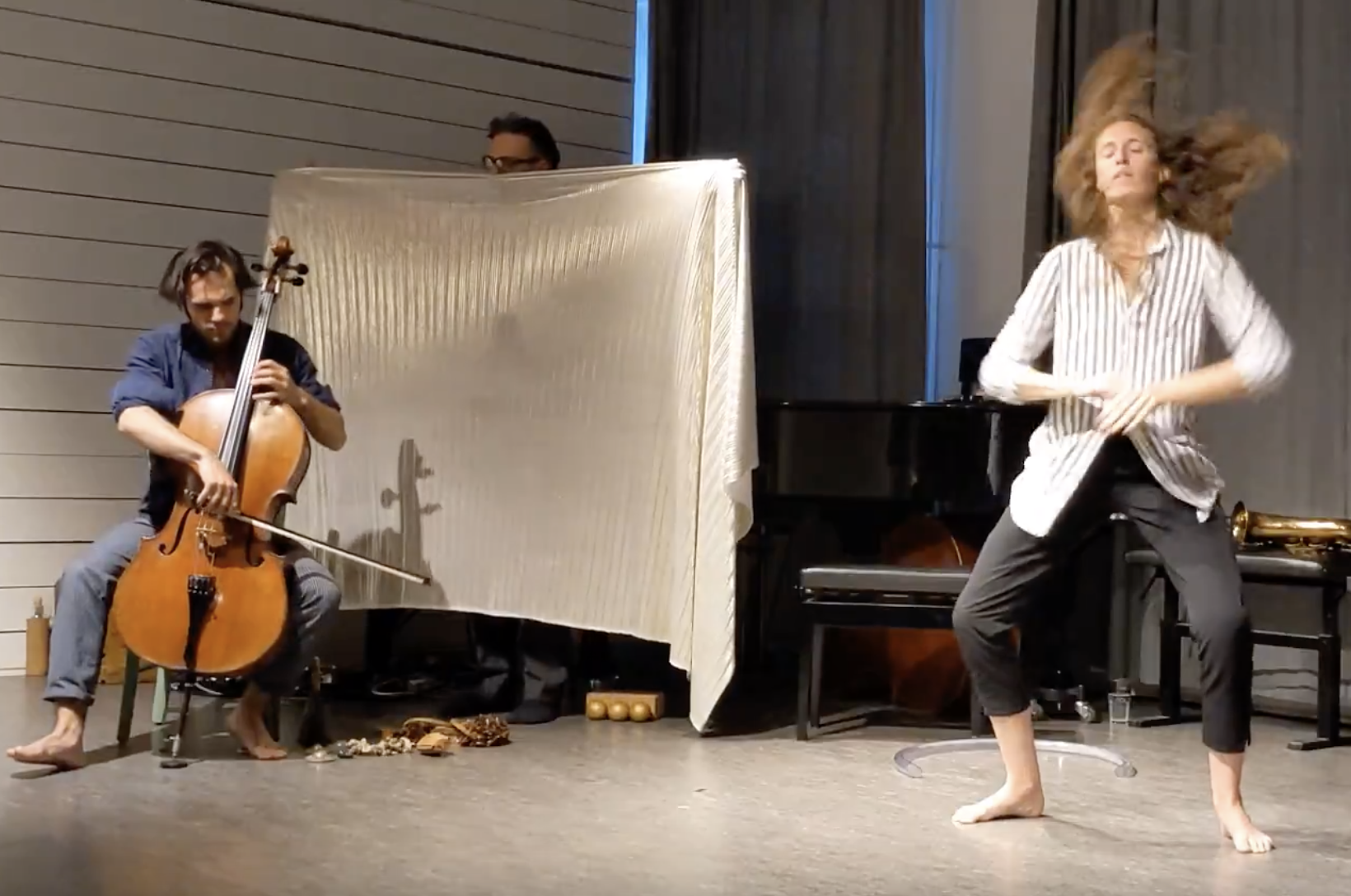
Individual Bios:
Lindsay Hopkins is a performer, facilitator and healing practitioner. Her interdisciplinary practice focuses on improvisational movement, physical theatre and curating socially engaged art with opportunities for active participation in somatic practices and participatory activities. She draws on her training with: improvisational movement, social mapping, Theater of the Oppressed, and Playback Theatre to bring embodiment, creativity, intuition and sensory awareness into her workshops, events and performance works. She is trained in energy healing, breathwork, bodywork and Somatic Trauma Therapy approaches and also works as a teaching artist. She has performed, facilitated workshops and participated in residencies both in the US and Europe.
Wilson Tanner Smith is a composer, improviser, and performance artist originally from Philadelphia, with creative roots in the improvised/experimental music & dance communities of Chicago. My work is most often rooted in a sense of Presence and a process of reflecting: mirroring the alienating, absurd, silly or senseless signals we receive from the world around us, in order to cultivate an awareness of the relationships we have with the people, systems, and structures around us. As a cellist/improviser he frequently collaborates across music, theatre, and dance projects, and has performed at formal and informal venues in the US and Europe.
Keefe Jackson, saxophonist and clarinetist, has lived in Chicago since 2001 (originally from Fayettevile, Arkansas). He performs regularly in the Americas and in Europe in different groups, both musical and interdisciplinary. Among the primary considerations of his work is the intersection between improvisation and composition.
